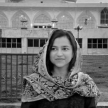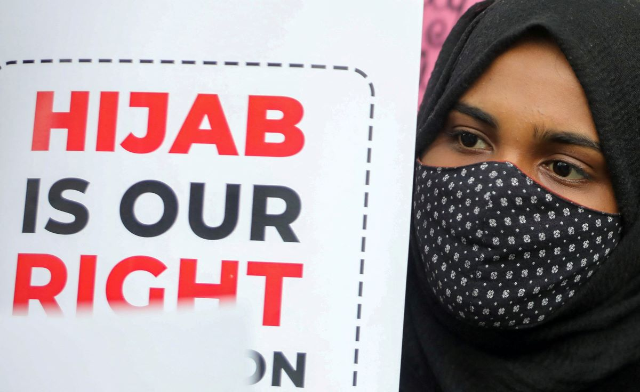|  | Know better. Do better. |  | Policy, honestlyThe real-life impacts of policy decisions |
|
| | | By Tarushi Aswani | Journalist | | |
|  |
| The policy:
On March 15th, 2022, the Karnataka High Court in southern India upheld a ban on the hijab, or Islamic headscarf, by educational institutions, ruling that wearing it was not an essential religious practice under Islam. It said the hijab was therefore not protected by Article 25 of the Indian Constitution, which guarantees the right to practice one's religion.
The impact:
In February 2022, a young Muslim student, Muskan Khan, was heckled outside her college in southern India by a large crowd of Hindu men because she was wearing a hijab. As they tried to intimidate her by chanting slogans, she shouted back: “Allahu Akbar”.
A video of the incident went viral, and it proved a high point of tension between Hindus and Muslims in the state of Karnataka after scores of schools and colleges began denying entry to Muslim girls who choose to wear the headscarf.
Khan later said she shouted not to confront the crowd, but to give herself strength.
The institutions had begun invoking the ban in December 2021 and, with the issue in the national spotlight thanks to viral videos and images, the Karnataka High Court upheld it in March after a group of girls brought a case challenging the policy.
With the law now firmly behind the ban, girls faced an ultimatum: you can choose your hijab or you can choose your education.
Aliya Assadi was one of the girls given that choice and, when she refused to stop wearing her hijab, she quickly became one of the first six students to be expelled from classes. Now, months later, Aliya is trying to complete her education through correspondence.
For the 17-year-old, the ban was a clear attempt to imply that her religion and her education were not compatible.
“It has put us in a dilemma of choosing between faith, identity and education,” she said. “If a girl chooses … then she has been forced to compromise ... careers have been ruined.”  A Muslim student holds a placard during a protest by Muslim Students Federation (MSF) against the recent hijab ban in few of Karnataka’s colleges, in New Delhi, India, February 8, 2022. REUTERS/Anushree Fadnavis |
Many of her classmates, she says, have now lost a year of education to the ban.
And they are not alone.
In August, the Deccan Herald newspaper obtained documents related to several colleges affiliated with Karnataka’s Mangalore University in the Dakshna Kannada and Udupi districts. They showed that 145 out of 900 Muslim girls enrolled in the 2020-21 and 2021-22 academic years had either dropped out or moved to another institution.
In the wake of the high court decision last March, a pattern has become apparent. When made to choose between religion and education, many Muslim girls are leaving schools and colleges or moving away from the state.
But moving away to a private university is not affordable for everyone.
Nigar Zahidh, a former student at a government college in Udupi, told me she decided to choose her hijab over “conditional education”. She thinks that the government is making an effort to offer an education only to those who are less “visibly Muslim”.
“I cannot be made to choose between a right and a religious duty. My hijab is my religious identity and I’m proud of it, and will be proud of it, even if it is criminalised by the government,” she told me.
Many Muslims in India feel they are under constant attack by the Hindu government of the ruling BJP party, as well as from far-right Hindu groups.
Karnataka, where Muslims make up 12% of the population, is becoming a hostile environment, they say.
The local government, though, argues that religious clothing has no place in education.
“Clothes which disturb equality, integrity and public law and order should not be worn,” the Karnataka Education Department has said.
And, in the months since the ban, classrooms in the state have started to look different. They are homogenous and they lack diversity, activists say. They point out that, cleansed of hijabs, schools now show no signs of peaceful religious coexistence.  Hijab wearing schoolgirls arrive to attend their classes as a policewoman stands guard outside a government girls school after the recent hijab ban, in Udupi town in the southern state of Karnataka, India, February 16, 2022. REUTERS/Sunil Kataria |
Away from the markedly changed classrooms of Karnataka, a group of activists and organisations have taken their fight to have the ban overturned all the way to India’s Supreme Court. In October, the court delivered a split verdict, with the two-judge bench divided. The issue will now be placed before the Chief Justice of India.
Nabeela Jamil, a lawyer who helped with the petitioner’s case before the Supreme Court, says the ban is “an open and shut case of religious discrimination”.
“The hijab ban is discriminatory to Muslim women both legally and socially to a point where you’ll find young Muslim girls going through psychological battles,” she said.
“To fight a legal fight with arguments and composure and then to resist a larger society that by its silence only adds to the already existing alienation of the Muslim women, it’s deeply saddening to say the least.”
Jamil, who herself wears a hijab, pointed out that north India’s Punjab and Haryana High Court has ruled the turban should be regarded as an essential right of Sikhs.
So why should the headscarf be any different?  A Muslim student holds a placard during a protest by Muslim Students Federation (MSF) against the recent hijab ban in a few of Karnataka's colleges, in New Delhi, India, February 8, 2022. REUTERS/Anushree Fadnavis |
As the legal wrangling continues, young Muslim students say they continue to suffer.
Asma Zehra, president of the Muslim Women’s Development Society, told me the ban was reversing decades of hard work that went into educating Muslim girls.
“All the efforts of NGOs and Muslim activists who campaigned hard to bring Muslims girls to school are at a standstill now, because our girls are being forced to take off their hijabs if they want to attend educational institutions,” she said.
For the girls and advocates I spoke to, the issue is a question of fundamental rights for Muslims, who make up about 14% of India’s population.
“In classrooms, we were told that we are the future of this country. But our experience during this movement made us feel that we have been treated as a foreigner … Banning hijab simply means shutting the doors of education to Muslim girls,” Aliya said.
“What could be more terrible than this? But, still, we are living with hope.”
Any views expressed in this opinion piece are those of the author and not of Context or the Thomson Reuters Foundation. |
|
|
| | Fraud and corruption have plagued efforts to return thousands of expropriated assets to their owners, with many still empty-handed | Foreign-trained nurses must pass a language test that is difficult even for some native speakers, keeping many in low-paid jobs | Farming can be a life-threatening occupation in north Nigeria, as armed gangs demand protection cash and kidnap residents for ransom | Domestic violence costs billions of dollars a year, increases work absenteeism and places a burden on public services | Many in Haiti rely on family sending money from abroad to pay for basics as rising prices force citizens into "catastrophic" hunger | Aid workers are calling for an immediate famine declaration to mobilise resources, but say politics is stalling the decision | |
| |
| | | |
|